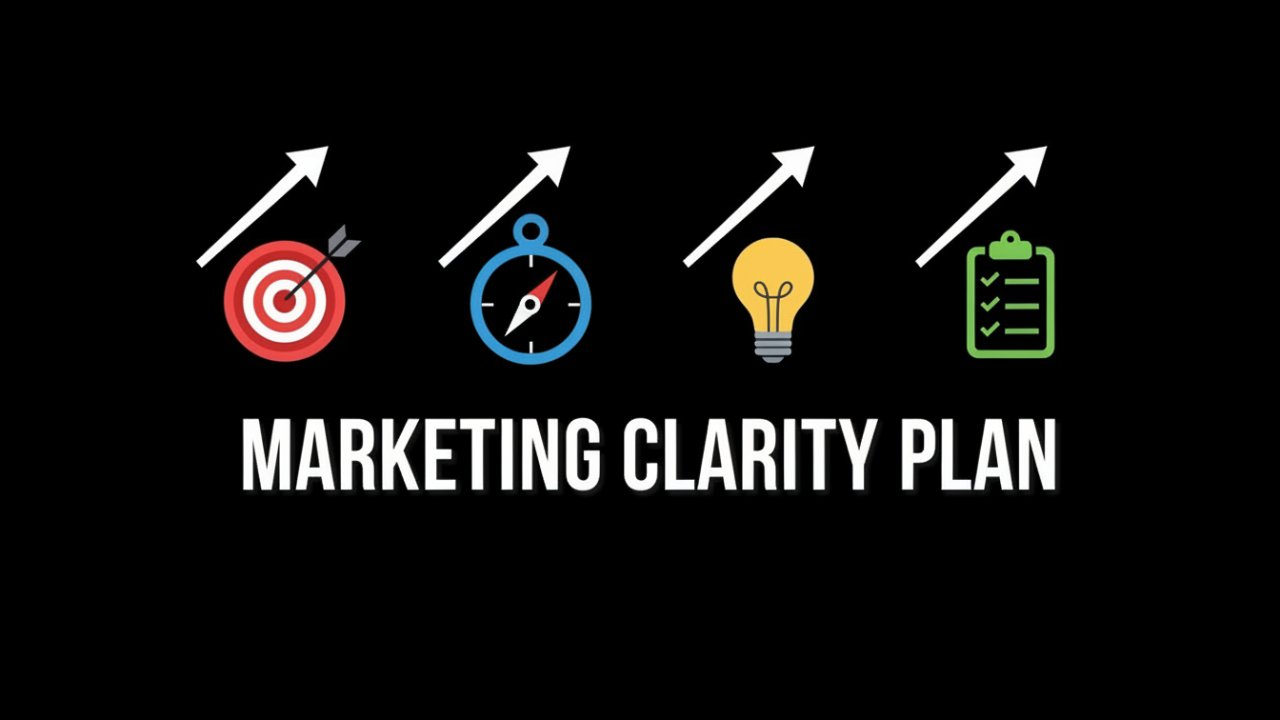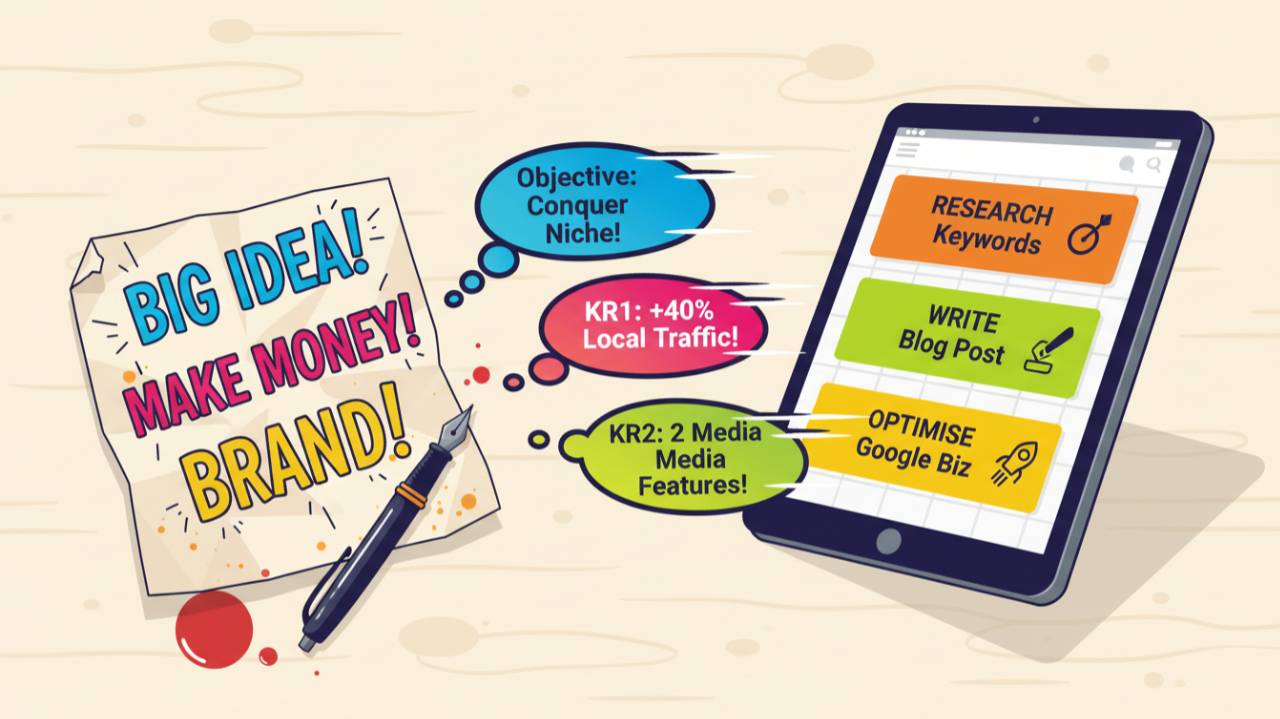How to Identify Your True Revenue Drivers: The 80/20 Rule for Overwhelmed Business Owners
Does your to do list have its own to do list? Is your desk a chaotic landscape of half empty mugs, urgent post it notes, and the lingering feeling that you’re forgetting something monumentally important? If you just nodded, even internally, then you’re in the right place. Being a business owner often feels like being a professional plate spinner, except the plates are on fire and someone keeps adding more.
It’s a strange paradox, isn’t it? You started this venture for freedom, for impact, for control. Yet here you are, chained to your laptop, answering emails at 10 PM and feeling like you’re constantly running but never actually moving forward. The sheer volume of tasks is overwhelming. You’re the CEO, the marketing department, the head of sales, the bookkeeper, and often the one who has to figure out why the printer is making that weird noise again.
But what if I told you there’s a way to get off this hamster wheel? A simple, almost deceptively easy, system to figure out what actually matters in your business. I'm talking about a method that can help you slash the busywork, focus on what truly grows your bottom line, and reclaim anywhere from 10 to 15 hours of your life every single week. No magic wands, just a shift in perspective. It’s called the 80/20 Rule, and it might just be the most important thing you learn this year.
What on Earth is the 80/20 Rule?
It sounds a bit like another piece of business jargon, I know. But stick with me, because this one is different. The 80/20 Rule, also known as the Pareto Principle, is an observation made by an Italian economist named Vilfredo Pareto way back in the 1890s. He noticed that about 80% of the land in Italy was owned by only 20% of the population. Being a curious fellow, he then noticed the same pattern in his garden, where 20% of his pea pods produced 80% of the peas.
The principle is this: for many events, roughly 80% of the effects come from 20% of the causes.
It’s not a hard and fast mathematical law, more of a recurring pattern in the universe. And once you start looking for it, you see it everywhere. 20% of drivers cause 80% of traffic jams. You wear 20% of your clothes 80% of the time. And most importantly for us, it’s almost certain that 20% of your activities are generating 80% of your revenue.
Think about it for a second. In my first business, a small digital marketing agency, I was convinced every client was equally important. I spent hours crafting bespoke reports for tiny clients who paid me a pittance, while my biggest, most profitable clients got the same level of attention. It was only when I was on the verge of burnout that I actually looked at the numbers. It turned out three clients, just three, were responsible for almost three quarters of my income. The other twelve were basically paying for my coffee. That was my pea pod moment. That 20% was my entire business, and the other 80% was just… noise.
For a local bakery, it might be that their wedding cakes (20% of their product line) bring in 80% of their profit. For a freelance consultant, 20% of their marketing efforts, say speaking at local events, might be generating 80% of their high-quality leads. The rest, the endless social media posts and tinkering with the website, generates very little. The key is that effort and results are not evenly distributed.
Why Most of Us Are Drowning in the 80%
So, if this principle is so powerful, why are we all so busy? Why are we stuck working on the 80% of tasks that produce so little? I think it comes down to a few things.
First, there’s the "busy equals productive" myth. We’ve been conditioned to believe that a packed schedule is a sign of success. Clearing your inbox of 50 emails feels incredibly productive. It gives you a little dopamine hit. You’ve accomplished something. But did any of those emails actually move you closer to your biggest goals? Probably not. Compare that to the hard, mentally taxing work of, say, mapping out a new service offering. That’s tough. It doesn’t give you the same immediate satisfaction. So we procrastinate on the important stuff by doing the easy, urgent stuff.
Common time-wasting areas are an absolute minefield for business owners. There’s administration, the endless vortex of invoicing, chasing payments, and preparing for the VAT return. There are the meetings, so many meetings, that could have been a three-line email. There's the low impact marketing, like spending two hours designing a single Instagram post that gets 15 likes.
We get caught in this trap because the low value tasks are often the most visible and the most demanding. They scream for our attention. An angry email from a small client feels more urgent than the quiet, strategic thinking required to land a huge one. So we react. We spend our days as firefighters, putting out tiny blazes, while the foundations of the building are quietly being neglected. To be honest, it’s a difficult cycle to break. It requires a conscious, deliberate choice to step back and ask a very uncomfortable question: is what I’m doing right now the most valuable use of my time?
Your Step-by-Step Framework for an 80/20 Analysis
Alright, enough theory. Let’s get practical. Finding your 20% isn’t about guesswork; it requires a little bit of detective work. Here’s a simple, four step framework to audit your business and your time.
Step 1: Gather Your Data
You can't manage what you don't measure. For the next two weeks, you need to become a data collector. Don’t panic, this doesn’t need to be complicated. You need two main sets of information.
- Activity Data: Track your time. Use a simple spreadsheet, a notebook, or an app like Toggl or Clockify. Be brutally honest. Log everything you do in your workday, from deep work on a client project to mindlessly scrolling through LinkedIn.
- Results Data: This is your output. What are you trying to achieve? Usually, it's revenue. List all your clients or income streams from the last six to twelve months and note down how much revenue each one generated. You could also track things like the source of your leads (e.g., referral, Google search, networking event).
Step 2: Rank and Segment
Now you have your raw data. It’s time to make sense of it.
- For your revenue data, sort your clients from highest paying to lowest paying. You’ll probably see a stark difference. Identify the top 20% of clients who are generating the lion’s share of your income.
- For your activity data, create broad categories. Things like: Client Work (High Value), Client Work (Low Value), Marketing, Administration, Meetings, Business Development, Procrastination (yes, be honest).
Step 3: Connect the Dots with an Audit
This is the "aha" moment. You’re going to cross reference your time with your results. Create a simple table or spreadsheet. In one column, list your activities from the time tracking exercise. In the next column, ask yourself, "Does this activity directly serve my top 20% clients or my most profitable service?"
For example, spending two hours on a strategy call with your number one client? That’s a high impact task. Spending two hours formatting an invoice for a tiny, difficult client who pays late? That’s a low impact task. You will start to see a very clear pattern emerge between where your time goes and where your money comes from.
Step 4: Identify Your Vital Few and Trivial Many
By now, you should have two clear lists.
- Your Top 20% (The Revenue Drivers): These are the activities, clients, products, or marketing channels that are punching way above their weight. These are your golden geese.
- Your Bottom 80% (The Time Wasters): These are the tasks that consume hours but contribute very little to your profit or long term goals. These are the tasks that keep you busy but not productive.
Frameworks and Actions to Reclaim Your Time
Identifying the problem is half the battle. Now you have to actually do something about it. This is where you become ruthless.
A great tool for this is a simple priority matrix, often called the
Eisenhower Matrix. You draw four boxes.
- Top Left (Urgent & Important): Do it now. These are crises or major deadlines for your top clients.
- Top Right (Not Urgent & Important): Schedule it. This is where the magic happens. This is strategic planning, relationship building with your best clients, developing new services. This is your 20%. You must carve out and protect time for this box.
- Bottom Left (Urgent & Not Important): Delegate it. These are the interruptions, the admin requests, the "quick questions" that derail your day. Can a virtual assistant handle your inbox? Can you use an online scheduler to stop the back and forth of booking meetings?
- Bottom Right (Not Urgent & Not Important): Eliminate it. This is the mindless scrolling, the over perfecting of tiny details no one will notice, the meetings you attend out of habit. Just stop doing them. Be brave. Decline the invitation.
Once you have your lists from the audit, you can start plugging them into this matrix. The goal is to systematically move tasks out of your day.
- Eliminate: Can you "fire" a nightmare client that takes up 80% of your admin time for 2% of your revenue? Yes, you can. Can you simply stop producing that weekly report that nobody reads? Give it a try.
- Automate: Can you use accounting software like Xero or FreeAgent to automate your invoicing and payment reminders? Can you use an email marketing tool to nurture leads instead of writing one off emails?
- Delegate: This is a big one for founders. It requires letting go of control. But hiring a virtual assistant for five hours a week to manage your calendar and filter your emails can be absolutely transformational. It frees up your mental energy for the work only you can do.
Then, you take the time you’ve saved, and you pour it back into your high impact activities. Double down on what works. Spend more time nurturing relationships with your best clients. They are the ones most likely to buy more from you and refer you to others. If you found that speaking at events brings you amazing leads, go find more events to speak at. Invest in the 20% that matters.
The Result: More Money, More Time, and Less Stress
Let’s imagine a hypothetical business owner, Sarah, who runs a graphic design studio. Before her 80/20 analysis, she was working 60 hours a week. She treated every project, from a £100 logo for a friend’s start-up to a £10,000 branding package for a corporate client, with the same frantic energy.
After tracking her time and revenue, she discovered that two large corporate clients accounted for 75% of her income but only took up about 30% of her time. The other 70% of her time was spent on a dozen smaller, demanding clients, endless revisions, and chasing small invoices.
So, she made some hard choices. She politely referred the smaller clients to another designer. She automated her booking and invoicing with a simple tool. She hired a VA for three hours a week to handle her email enquiries. Suddenly, she had an extra 15 hours a week. She used that time to proactively create a new high value service package for her two best clients, both of whom bought it.
The result? She now works 45 hours a week, her revenue has increased by 20%, and she no longer has that constant feeling of dread when she opens her inbox. She has time to go to the gym. She has dinner with her family. Her business is stronger, more profitable, and more enjoyable. This isn’t a fantasy. This is the direct result of applying the 80/20 principle with intention.
It’s Your Turn to Find the 20%
Look, your business should serve your life, not consume it. The constant state of overwhelm isn’t a badge of honour; it’s a sign that your energy is focused in the wrong places. The 80/20 rule isn’t about working less, necessarily. It’s about achieving more with less wasted effort. It’s about focusing your incredible talent and passion on the things that truly matter, the things that will build a sustainable, profitable, and enjoyable business.
You don't need to do a perfect, exhaustive analysis tomorrow. Just start small. For the rest of today, just keep a simple log of what you’re doing. At the end of the day, look at the list and ask yourself, "How much of this truly pushed my business forward?"
The answer might surprise you. And that surprise is the first step toward getting your time, and your life, back.
If you’re standing on that plateau and feeling unsure about the next step, you don’t have to figure it out alone. A fresh perspective can make all the difference.
Book a Growth Coaching Session with us, and let’s map out your path forward together.
Additional Resources:
For further material on related topics, consider exploring the following:
Ready to Turn Information into Action?
Reading about solutions is one thing, but implementing them when you're already overwhelmed is another. If you're ready to stop spinning your wheels and get a clear, actionable plan, it's time to talk to someone who's been in the trenches.
Adam isn't just a coach; he's a fellow business builder who can help you find the clarity you need in a single hour. Book a no-obligation, honest conversation with Adam at New Way Growth. No sales pitches, just a genuine chat about your goals and the obstacles holding you back.
Reclaim your momentum, energy, and confidence.
Contact us
now and let’s turn your business strategy into unstoppable progress.
Phone: 0330 311 2820
We look forward to helping you discover your unique path to growth, strategies that fit you - not the other way round.
Pay It Forward! Sharing Is Caring!











